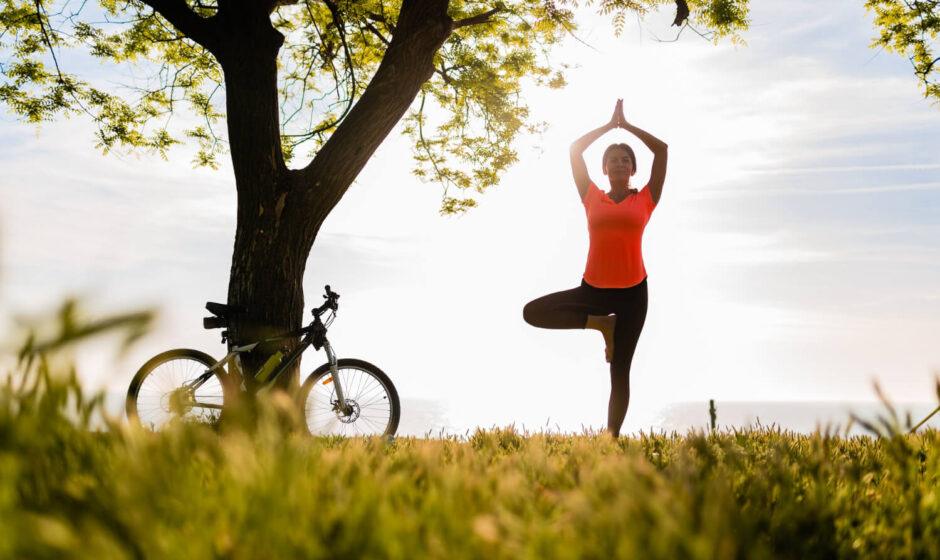The fields of health and beautification come together in the quest for holistic well-being to create environments that are above and beyond the norm. Aesthetics are essential in creating spaces that inspire the senses and satisfy the body, from yoga studios and spas to wellness retreats. This post explores the complex relationship between aesthetics and health, showing how thoughtful design and aesthetics may help create restful, revitalizing environments that support general well-being.
-
Design’s Mind-Body Connection:
Introduction
Outlining the background information necessary to comprehend how design affects the mind-body relationship.
Ecologic design in Wellness Spaces
Investigate the concepts of ecologic design and its function in bringing people closer to nature and creating a peaceful, tranquil environment in wellness spaces.
Color Psychology in Wellness Environments
Examine how color selection affects emotions and mental states while discussing color psychology in wellness environments, with an emphasis on designing calm and peaceful environments.
Sensual Design Elements
Stress the value of using design elements like sounds, textures, and scents to pique the senses and improve overall wellness.
-
Yoga Studios: A Place of Design and Serenity
Introduction
Creating calm and stimulating yoga rooms via the integration of deliberate design and yoga philosophy.
Yoga Studio Layout and Flow
The importance of studio structure and flow in creating a smooth, distraction-free atmosphere for yoga practitioners is discussed.
Natural Light and Ventilation
Investigate the advantages of adding natural light and ventilation to yoga studios to foster an open feeling and a connection to the outside world.
Minimalist Deign Principle
Emphasize how the principles of minimalist design help create a peaceful and clutter-free environment in yoga studios.
-
Spa Environments: Calm Refuges for Wellness
Introduction
The skill of creating peaceful retreats for rest and renewal in spa surroundings.
Aromatherapy and scents cape Design
Talk about the roles that scents cape design and aromatherapy play in establishing relaxing and engaging spa experiences.
Hydrotherapy and Water
Examine the advantages of including hydrotherapy and water features in spa design to enhance both physical and mental relaxation.
Texture and Materials Selection
Describe how the tactile and sensory experience in spas is enhanced by the selection of materials and textures, such as natural components and soft fabrics.
-
Spa Retreats: Taking Care of the Spirit and Senses
Introduction
Creating health retreats that address the mind, body, and soul with a holistic approach.
Architecture Inspired by Nature
Talk about how to use architecture inspired by nature into wellness retreats to create a smooth transition between indoor and outdoor areas.
Mindful Landscaping
Examine how thoughtful landscaping creates tranquil and restorative outdoor areas that enhance the overall atmosphere of wellness retreats.
Holistic Room Design
Emphasize the value of creating rooms with a holistic approach by include components that encourage awareness, relaxation, and rest.
-
Healing Colors in Wellness Environments
Introduction
The improvement of energy flow in wellness areas via the application of Feng Shui principles and healing hues.
Chromo therapy in Design
Talk about the idea of chromo therapy and investigate how certain colors might encourage harmony and healing in places of wellbeing.
Feng Shui Principles and Wellness
Discover the fundamentals of Feng Shui, including harmony, balance, and the utilization of natural materials to design energetically beneficial environments for wellbeing.
Establishing Personalized Spaces
Stress the value of doing this in wellness settings since it enables people to form stronger connections with their surroundings.
-
Encouraging Diverse Needs through Inclusive Design for Wellness
Introduction
To accommodate a range of needs and abilities, inclusive design is essential in wellness settings.
Accessible Yoga and Spa Facility
Talk about how accessible design concepts can be implemented by yoga studios and spas to make health practices accessible to people with a range of abilities.
Experiences of Inclusive Retreats
Examine how wellness retreats can offer experiences that are inclusive of people with varying needs, preferences, and backgrounds.
Technology and Accessibility
Emphasize how technology, from clever design elements to virtual wellness experiences, may improve accessibility inside wellness venues.
-
Technology Integration for Better Wellness Experiences
Introduction
The introduction will discuss how incorporating technology can improve the overall wellness experience while maintaining the tranquil environment.
Digital Mindfulness Tools
Talk about the usage of digital mindfulness tools to supplement conventional wellness practices. Examples of these tools include virtual relaxation sessions and meditation applications.
Smart Lighting and Climate Control
Investigate the ways in which climate control and smart lighting technologies might be combined to create calming, personalized settings in wellness areas.
The use of virtual reality to enhance wellness
Showcase the latest developments in this field, which provide healing and immersive experiences.
-
Community Wellness Areas: Promoting Support and Connection
Introduction
Community wellness spaces play a vital role in creating a sense of community, connection, and support.
Designing Social Spaces
Talk about how wellness spaces’ common areas can promote shared experiences, social engagement, and community building.
Community Wellness activities
Stress the value of holding workshops and activities that promote shared learning and well-being throughout the community.
Designing for Mental Health Support
Learn how to incorporate areas for quiet reflection, support groups, and mental health resources into wellness spaces to promote mental health.
-
Impact of Wellbeing Measurement: Success Metrics
Introduction
Indicators and metrics to assess how effectively wellness areas are doing in fostering overall wellbeing.
Surveys of Participant Satisfaction
Talk about how important it is to get survey responses from participants in order to determine how wellness spaces affect people’s general sense of satisfaction and wellbeing.
Stress and Health Metrics
Examine quantifiable health and stress-related metrics to determine how well wellness spaces support both mental and physical wellbeing.
Long-Term Impact Studies
Stress the importance of carrying out long-term impact studies to comprehend the long-term advantages that wellness centers provide to people and communities.
CONCLUSION
Using Design to Nurture the Body, Mind, and Spirit
- Summarize the mutually beneficial relationship between wellness and beautification, demonstrating how deliberate design improves people’s general quality of life.
- Stress the transformational potential of wellness areas in fostering rest, renewal, and community.
- End by extending an invitation to readers to investigate and design wellness areas that combine aesthetics and health, promoting a harmonious balance for a complete and satisfying existence.



